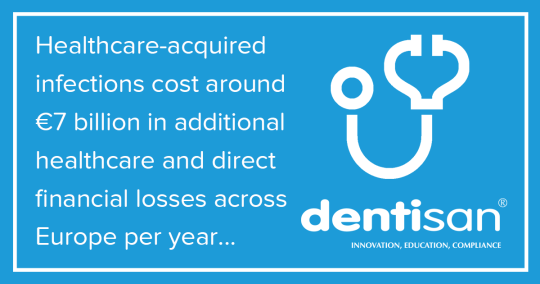Did you know? According to the European Centre for Disease Prevention and Control, healthcare-acquired infections affect over 4 million patients a year across Europe and cost around €7 billion in additional healthcare and direct financial losses[1].
That is an eye-opening statistic, but what’s interesting is that scientists and governments point to hand hygiene as one of the easiest and most cost-effective ways of preventing the spread of such infections.

With seasonal colds and flu viruses doing the rounds as we stick together indoors during cold winter months, dental practices can provide an ideal environment for infections to be unwittingly spread. As we constantly touch surfaces and instruments, unpleasant bacteria and viruses (which, by the way, can be very adept at surviving outside of the body for long periods) can thrive on unclean hands, reception desks, door handles and the like, posing a potential infection risk to the next person who touches them.
Hand hygiene is one of the simplest but most important measures for reducing the risk of infection transmission during patient care. Effective hand hygiene protects both patients and members of the dental team and is an essential part of a practice’s infection control policy. So what can we do to greatly reduce the risk of passing on infections and ensure practices are compliant with current regulations and guidelines regarding hand hygiene?
[1]
www.fgdp.org.uk/content/news/dentists-asked-to-make-hand-hygiene-go-viral.ashx







